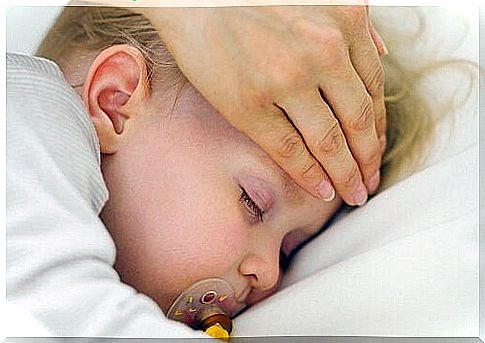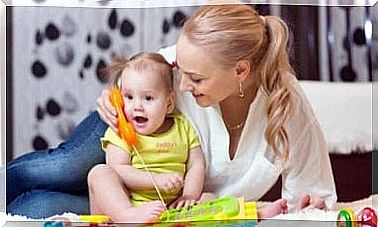Preventing Bronchiolitis: Is It Possible?

Bronchiolitis is a respiratory infection that has symptoms similar to those of a common cold. One of the most common questions about children’s health is whether it is possible to prevent bronchiolitis.
Both acute bronchitis and chronic bronchiolitis are often unavoidable. However, there are some steps you can take to reduce the risk.
In infants and other sensitive people, it can lead to serious complications. One in four doctor visits for bronchiolitis results in a hospital stay for the baby. Therefore, experts recommend that you consult a doctor when cold-like symptoms get worse.
Symptoms of bronchiolitis
As mentioned earlier, the symptoms of bronchiolitis can be similar to cold symptoms.
If your baby has cold-like symptoms that seem to be getting worse, it is very important to see a doctor and take the necessary samples.
These are the main symptoms:
- Chest pain.
- A cough that produces mucus. If the mucus is yellowish, it is probably a bacterial infection.
- Fatigue.
- Fever, often low.
- Breathing difficulties.
- Wheezing.

Other symptoms of chronic bronchiolitis are:
- Inflamed ankles, feet and legs.
- Bluish lips due to difficulty breathing.
- Recurrent secondary respiratory infections, such as colds or flu.
Tips for preventing bronchiolitis
To reduce the risk of your baby getting bronchiolitis, review its surrounding environment.
Be careful when people touch your baby and make sure you maintain good hygiene to prevent health problems.
These tips are useful for preventing bronchiolitis:
- Before taking the baby, be sure to wash your hands, especially when you have just returned home.
- Wash cloth toys and wipe toys and other surfaces that come in contact with your child’s hands and mouth.
- Avoid smoking tobacco at all costs. It is very important that no one smokes in the home or near your child. Substances from tobacco smoke remain on surfaces and in fabric.
- Once you have been out, change clothes if you have been in a smoky environment.
- Another tip for preventing bronchiolitis is to ventilate the home every day. Also make sure it is not too hot or too cold.
- Avoid environments where the child is at high risk of contracting the disease, such as hospitals, health centers, public transport and other public places.
- Always use disposable handkerchiefs, whenever possible, to avoid infection.
- When coughing or sneezing, cover your mouth with the armpit, not your hand. Teach your children to do the same.
- Breastfeeding provides better resistance to bronchiolitis, so experts recommend breastfeeding up to six months of age.
- If your child belongs to a high-risk group, you can prevent bronchiolitis by vaccinating your child. In that case, discuss it with your doctor.

Treatment of bronchiolitis
There is no specific treatment for viral bronchiolitis, but there are some measures we can take to relieve the symptoms.
Antibiotics are not helpful in this case; they treat infections caused by bacteria, not viruses. Some tips you can follow are:
- Use a nasal spray that contains a saline solution, if your pediatrician recommends it.
- Use a nasal aspirator to remove strings from the baby’s nose. This works best during the first 6 months.
- Paracetamol can help reduce fever in children, but always consult a doctor before giving it to your child or any other medicine.
- It is important that your child gets enough to drink. Also remember that it can lose appetite due to breathing difficulties.
If you notice any kind of cold-like symptoms that persist for more than a few days, it is important to consult your pediatrician and take samples for bronchiolitis.
One of the reasons why this disease can become so dangerous is that it often goes unnoticed, until it has gone so far that the child’s health is in serious danger.









